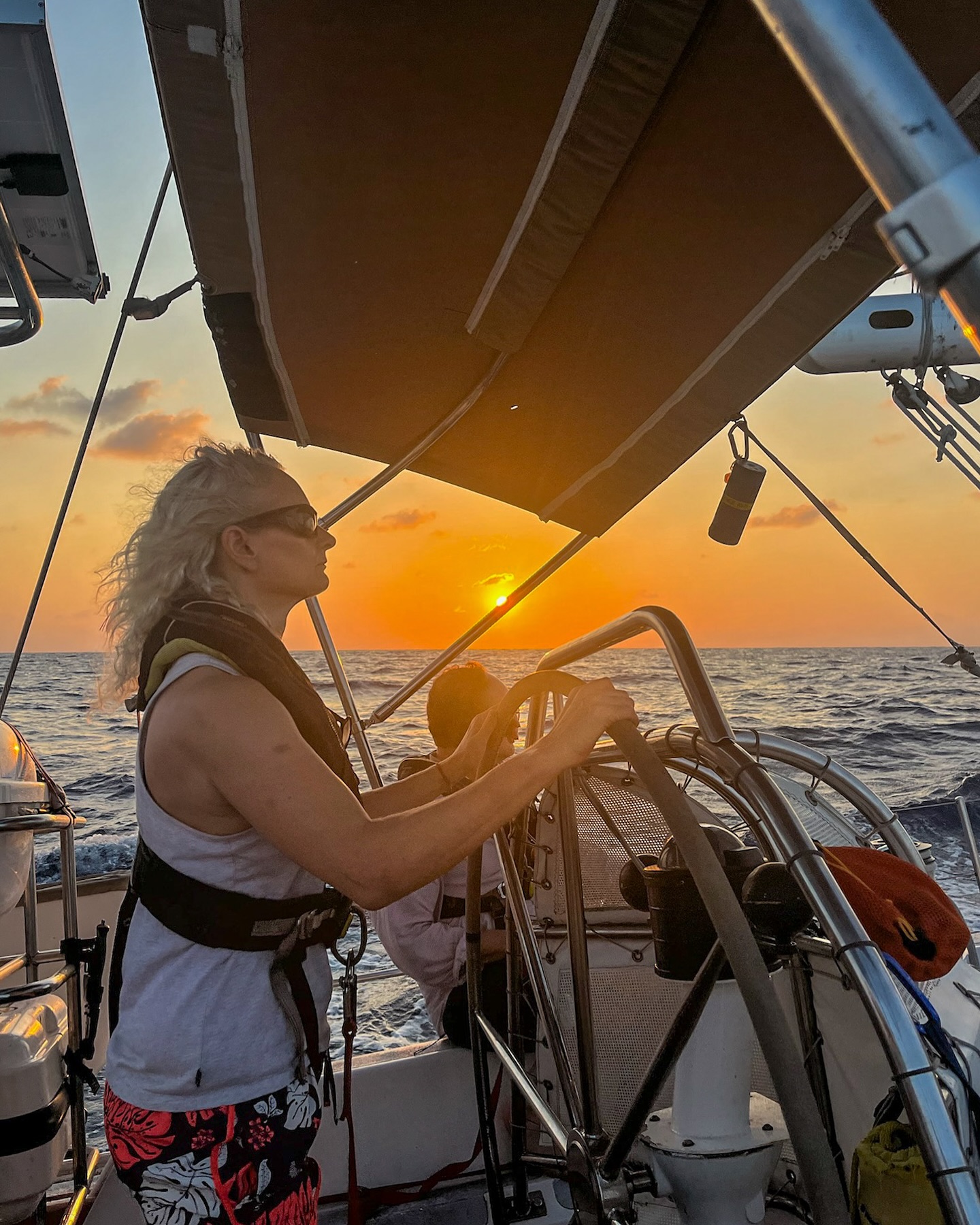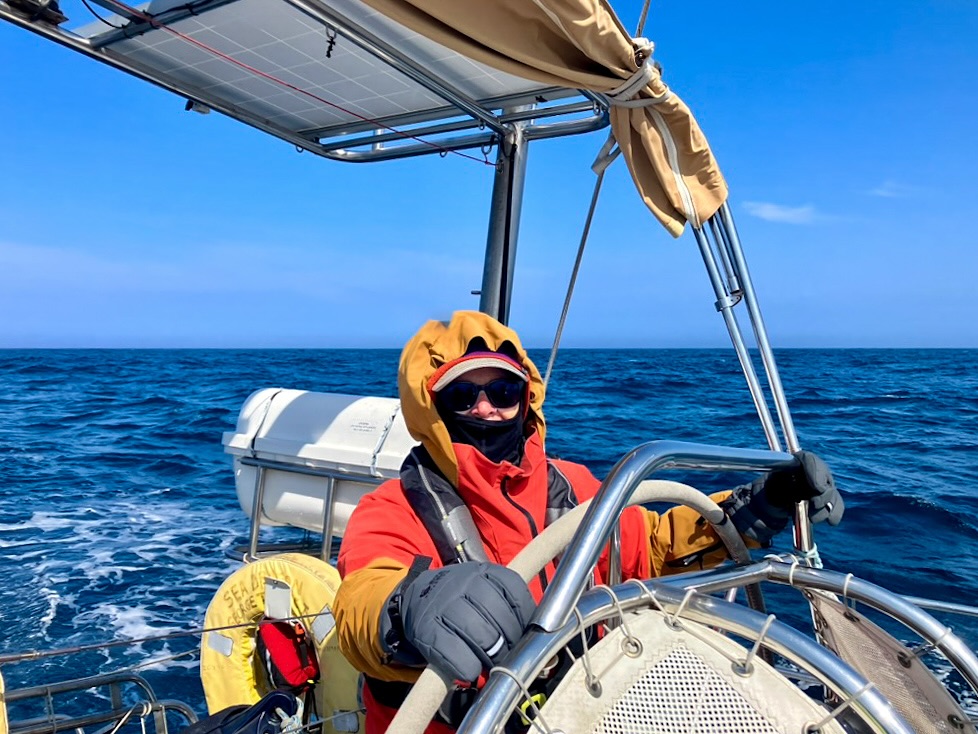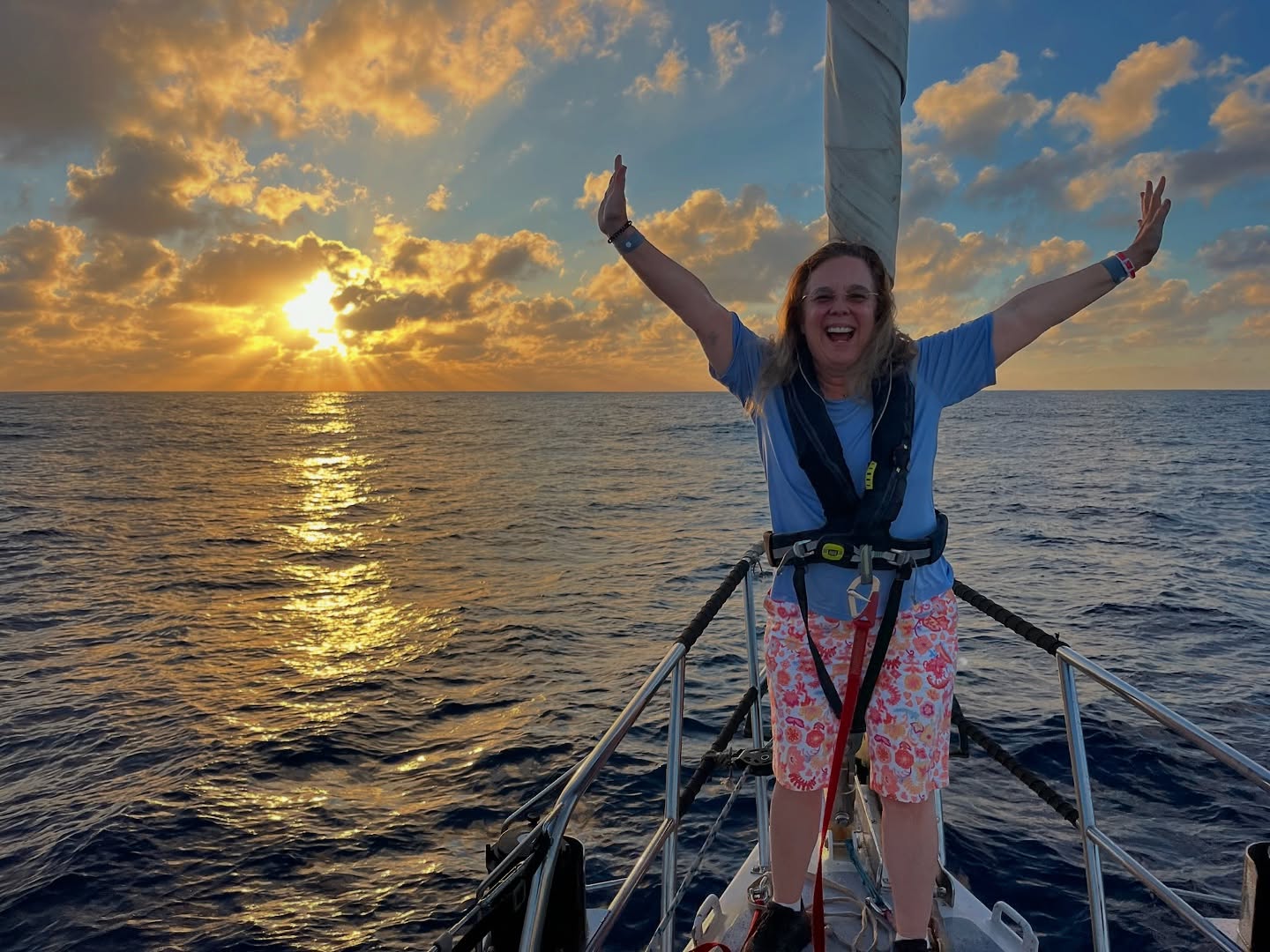Position:
29°11.9 North
170°35.2 East

“It’s a whale” yells Tracey from above deck. I’m eating humus below
in the salon with Dani, after forgoing Kelvin’s lunch of fried Kim Chi
with rice and seaweed. Wildlife sightings are like breaking news
aboard Sea Dragon, sometimes the only demarcation from one day to the
next. Dani and I both grabbed our cameras and went on deck. Tracey was
peering far off in the distance, tracking some object with binoculars.
The day before we had had a Sperm Whale breach within a 100 meters of
the ship to the bow and we hoped our luck would give us something
similar. But there was no breaching and no blowhole spouting from the
object in the distance. “Is its fin just sticking out of the water?
What is that? It’s white…is it a white whale?” says someone on deck. I
move to the bowsprit, start snapping photos. There is no color in this
day—a gray sky meets a gray ocean at the horizon, it’s as if we’re
traveling through a monotone void.
As we come up onto the object, we realize it’s not a whale. “It’s a
boat!” I yell. Indeed it is–the front third of a small skiff, bobbing
vertically, bow out of the water. The action is so gentle—the sea
state is calm and the wind nearly nothing. On either side of her are
Japanese characters, and it becomes instantly clear what we’ve found.
Here ,1500 miles east of Japan, we’ve found a boat presumably ripped
from its mooring when the wave hit. Everyday now, we’re spotting
something—a spare tire from a light truck, a piece of traditional
Japanese flooring, and several other objects that may or may not be
from the tsunami. But this is the biggest find so far. The dimensions
of the ship however are not large—my guess is that it was about 16
feet when intact, and it looks like a Japanese version of the common
Central American runabout fishing boat: the Panga.
We dive on her to survey what we can’t see beneath. In the water,
there is little growth on the boat—just a few barnacles, maybe five or
so. Tucked in the inside are probably 50 or 60 fish; Triggers, Rainbow
Runners and some species that look clearly out of place—tropical coral
dwelling fish. As we approach they scatter, then return. What’s now a
wreck of a boat has become a floating reef system for this crowd. The
back 2/3rds of the skiff are gone,the edges are jagged which denotes
some past violent action tearing the boat apart. “I wonder if the rest
of this boat is sunk, with an engine still attached,” says Marcus. We
go on to think about how many objects are anchored by some heavy
thing, that when rotted, will bob to the surface.
A small frayed line remains from a wooden beam in the front of the
boat which was presumably a painter line that had been tornfrom it’s
mooring when the wall of water engulfed her. As we survey, it’s like a
game of forensics. But first, there is feeling of gravity as Marcus
and I look at each other—this was some fisherman’s boat, a vessel that
was taken to sea by some man or woman, used as a runabout and here
now, lost, derelict, the feeling in the water is eerie, haunting. What
brings solace is that the mooring line clearly looks ripped, which
makes us deduce that most likely this boat was tied to a dock at the
time of the wave; most likely no life was lost on her when the tsunami
struck—at least that’s our hope. It’s a loss for sure, but not of the
kind that can’t be replaced.
As Marcus and I tread water and our perspective becomes even more
diminutive, as we look at Sea Dragon about a quarter kilometer away.
We consider the depths below us, some 5,000 meters and the distance to
land. Nothing makes one more aware of his powerlessness like swimming
in the middle of the ocean, unattached from our home and lifeline; our
ship. That sense of smallness felt, which is a continuing meme that
affects my thought process at sea makes me wonder what we’re missing
as we sail through the night—yes, what object and what story from this
tragedy passes by us, silently, unobserved and forgotten? And indeed,
what piece of flotsam is just past our vantage as we watch the horizon
from starboard and port?
We understand so little about this ocean, even with all our human
ingenuity. A few days ago a boat washed up on the shore of my home
state, Oregon, 2,500 nautical miles from where I’m now. Why does one
boat go so far? And why does one hardly drift? Well, that’s the hidden
industry of the mighty ocean, a secret not for me to know.
Now, after some considerable effort, the remains of the skiff reside
on the bow of Sea Dragon as we sail east. We hope that her name
depicted in these pictures, will get to its owner, and we hope that
when we hear from them that we hear they are safe, dry and alive. Our
hearts are always with you on this voyage Japan.

























